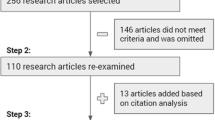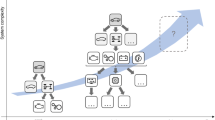Abstract
Integrating analysis and design models is a complex task due to differences between the models and the architectures of the toolsets used to create them. This complexity is increased with the use of many different tools for specific tasks during an analysis process. In this work various design and analysis models are linked throughout the design lifecycle, allowing them to be moved between packages in a way not currently available. Three technologies named Cellular Modeling, Virtual Topology and Equivalencing are combined to demonstrate how different finite element meshes generated on abstract analysis geometries can be linked to their original geometry. Cellular models allow interfaces between adjacent cells to be extracted and exploited to transfer analysis attributes such as mesh associativity or boundary conditions between equivalent model representations. Virtual Topology descriptions used for geometry clean-up operations are explicitly stored so they can be reused by downstream applications. Establishing the equivalence relationships between models enables analysts to utilize multiple packages for specialist tasks without worrying about compatibility issues or substantial rework.

















Similar content being viewed by others
References
Arabashi SD, Barton C, Shaw NK (1993) Steps towards cad-fea integration. Eng Comput 9(1):17–26
Beall MW, Shephard MS (2003) Accessing CAD geometry for mesh generation. In: 12th international meshing roundtable, Santa Fe
Cavalcanti PR, Carvalho PC, Martha LF (1997) Non-manifold modeling: an approach based on spatial subdivision. Comput Aided Des 29(3):209–220
Donaghy R, McCune W, Bridgett S, Armstrong CG, Robinson DJ, McKeag RM (1996) Dimensional reduction of analysis models. In Proceedings of the 5th international meshing roundtable
Harlin G (2013) Engineering value of simulation process and data-management applied to aero engine design. In Nafems World Congress, Salzburg
Lee JY, Lee JH, Kim H, Kim HS (2004) A Cellular topology-based approach to generating progressive solid models from feature-centric models. Comput Aided Des 36(3):217–229
Lee SH (2005) A CAD-CAE integration approach using feature based multi-resolution and multi-abstraction modeling techniques. Comput Aided Design 37:941–955
Makem JE, Armstrong CG, Robinson TT (2012) Automatic decomposition and efficient semi-structured meshing of complex solids. Eng Comput. doi:10.1007/s00366-012-0302-x
Nolan DC, Tierney CM, Armstrong CG, Robinson TT, Makem JE (2013) Automatic dimensional reduction and meshing of stiffened thin-wall structures. Eng Comput. doi:10.1007/s00366-013-0317-2013
Nolan DC, Tierney CM, Armstrong CG, Robinson TT (2013) Automating analysis modelling though the use of Simulation Intent, 2013. In: Paper presented at NAFEM World Congress, Salzburg, Austria
Owen SJ, Shepherd JF (2009) Embedding features in a Cartesian grid. In 18th international roundtable, Salt Lake City
Owen SJ, Cannan SA, Saigal S (1997) Pyramid elements for maintaining tetrahedra to hexahedra conformity. ASME, USA, pp 123–129
Robinson TT, Armstrong CG, Fairey R (2011) Automated mixed dimensional modeling from 2d and 3d cad models. Finite Elem Anal Des 47(2):151–165
Sheffer A, Blacker T, Bercovier M (2000) Virtual topology operators for meshing. Int J Comput Geomet Appl 10(3):309–331
Shephard MS, Beall MW, O’Bara RM, Webster BE (2004) Toward simulation-based design. Finite Elem Anal Des 1575–1598
Sypkens Smit M, Bronsvoort WF (2009) Integration of design and analysis models. Comput Aided Des Appl 795–808
M SypkensSmit, Bronsvoort WF (2009) Efficient tetrahedral remeshing of feature models for finite element analysis. Eng Comput 25:327–344
Thakur A, Banerjee AG, Gupta SK (2009) A survey of CAD model simplification techniques for physics-based simulation applications. Comput Aided Des 41:65–80
Tierney CM, Nolan DC, Robinson TT, Armstrong CG (2014) Managing equivalent representations of design and analysis models. Comput Aided Des Appl 11(2):193–205. doi:10.1080/16864360.2014.846091
Weiler K (1988) The radial edge structure. In Geometric modeling for CAD applications, North-Holland, pp 3–36
White D, Saigal S (2002) Improved imprint and merge for conformal meshing. In 11th international meshing roundtable, New York
Author information
Authors and Affiliations
Corresponding author
Rights and permissions
About this article
Cite this article
Tierney, C., Nolan, D., Robinson, T. et al. Using mesh-geometry relationships to transfer analysis models between CAE tools. Engineering with Computers 31, 465–481 (2015). https://doi.org/10.1007/s00366-014-0377-7
Received:
Accepted:
Published:
Issue Date:
DOI: https://doi.org/10.1007/s00366-014-0377-7




